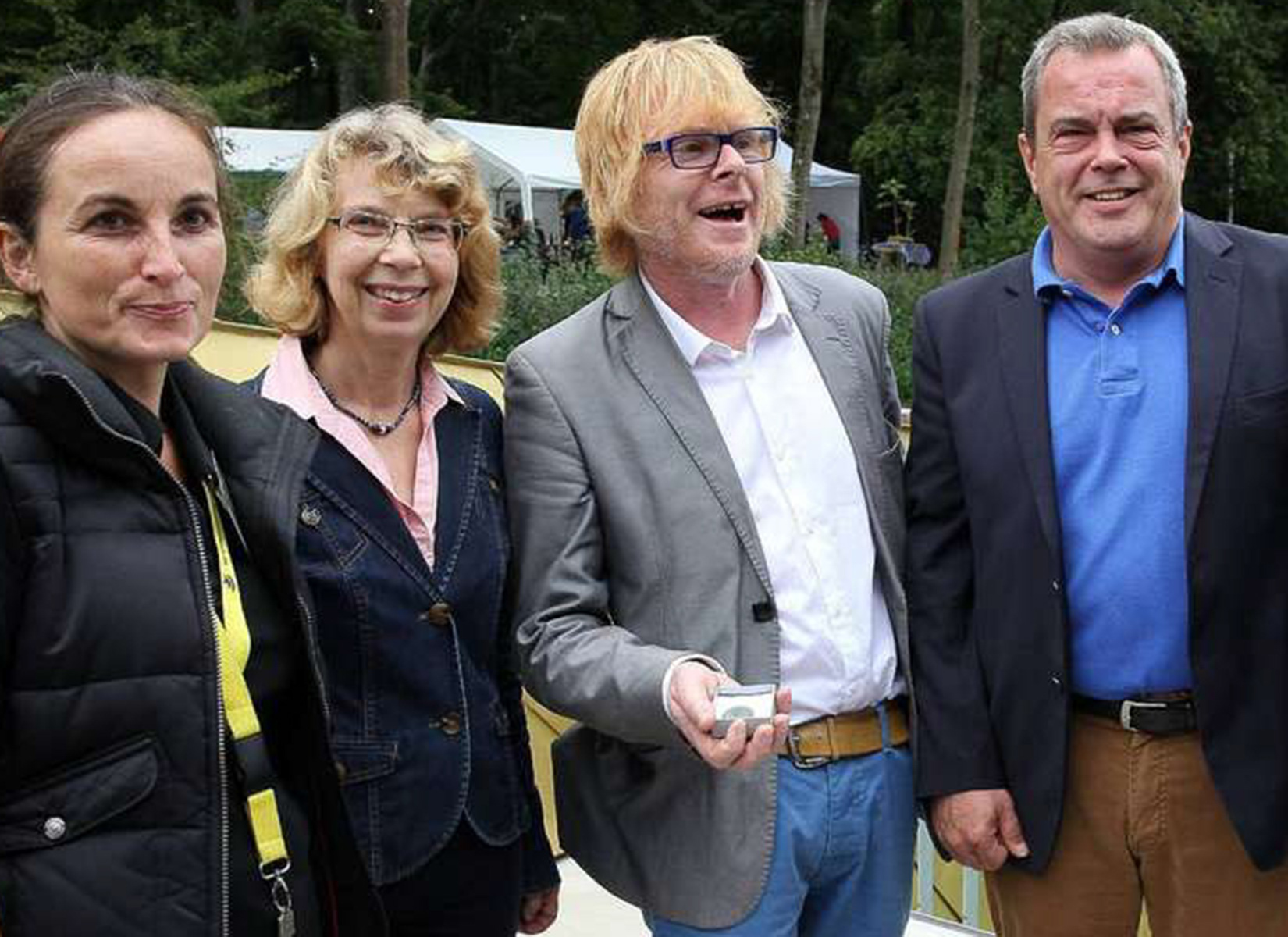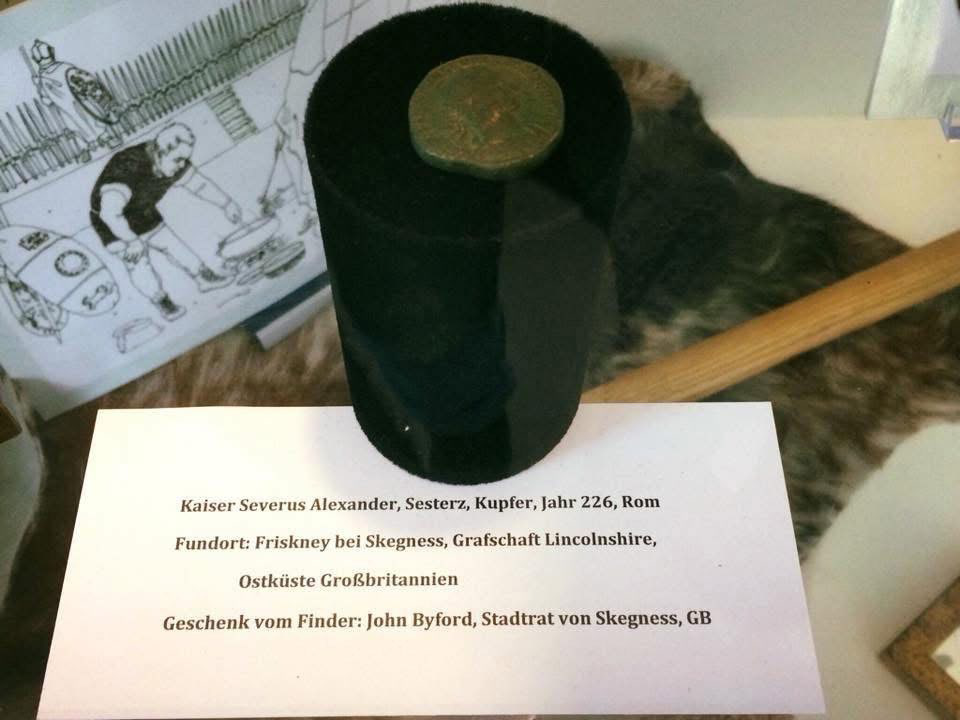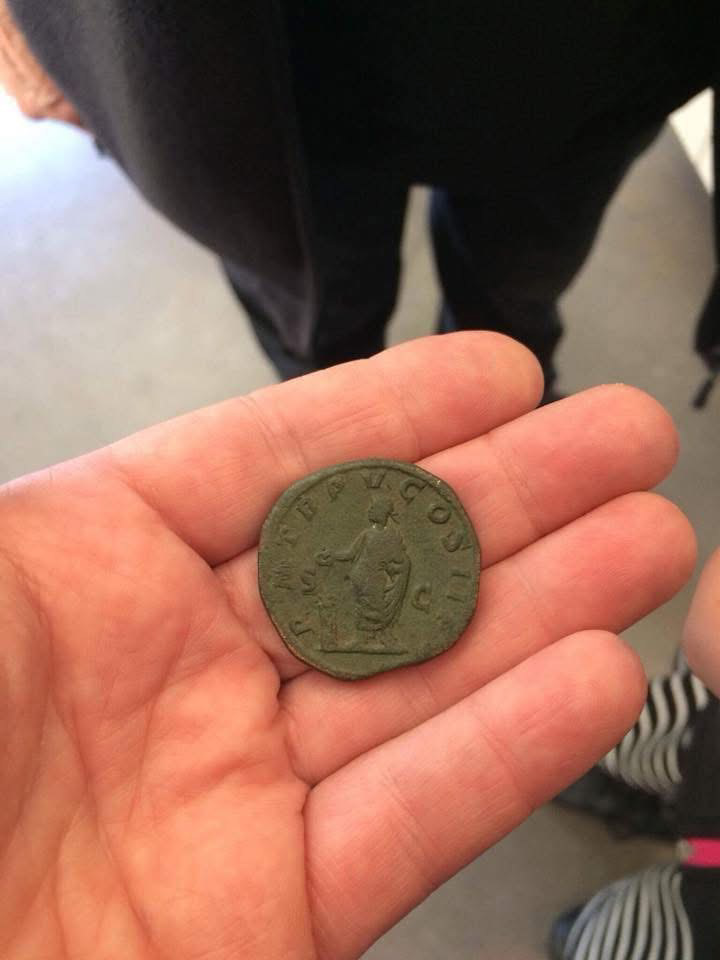English Artist Gifts Harzhorn a Piece of Roman History
English artist John Byford, from Bad Gandersheim’s twin town of Skegness, has presented Mayor Franziska Schwarz with a remarkable Roman coin dating back to the time of the Battle of the Harzhorn. The presentation took place on the Day of the Open Monument in Bad Gandersheim.
What makes this gift truly special is its story: the coin, more than 1,700 years old, was discovered by Byford himself in a field near Skegness.
“When I hold this coin in my hand, I feel connected to the past in a very real way,” said John Byford. “I hope visitors to the Harzhorn will experience that same sense of wonder when they hold this incredible piece of history.”
Byford finds it “absolutely fascinating” that a coin minted thousands of miles away in Rome travelled across Europe and over the English Channel, only to be found centuries later in Lincolnshire. “And now it’s making the journey back across the Channel to this special place, discovered by treasure hunters too,” he added with a smile.
His passion for treasure hunting began in 1980, when his parents gave him a metal detector for Christmas. Since then, he has been an active and enthusiastic detectorist. Among his most notable discoveries is a Late Iron Age chariot wheel axle linch-pin, now on display at the Verulamium Museum near London.
Alongside the coin, Byford presented the official export licence issued by the UK authorities. Mayor Schwarz expressed her delight, describing the gesture as “a symbol of the European idea – a shared history that connects us all.”
The coin, minted in AD 226, bears the image of Emperor Severus Alexander, who ruled from 222 to 235 – the period in which the Battle of the Harzhorn took place. Archaeologists date the battle to around 230 AD. Since its rediscovery in 2008, the site has become a major attraction for history enthusiasts.
According to district archaeologist Dr. Petra Lönne, the Harzhorn battlefield is expected to welcome around 4,000 visitors this year.

John Byford with coin Emperor Severus Alexander

Vew from Harzhorn

Emperor Severus Alexander on display at Harzhorn
